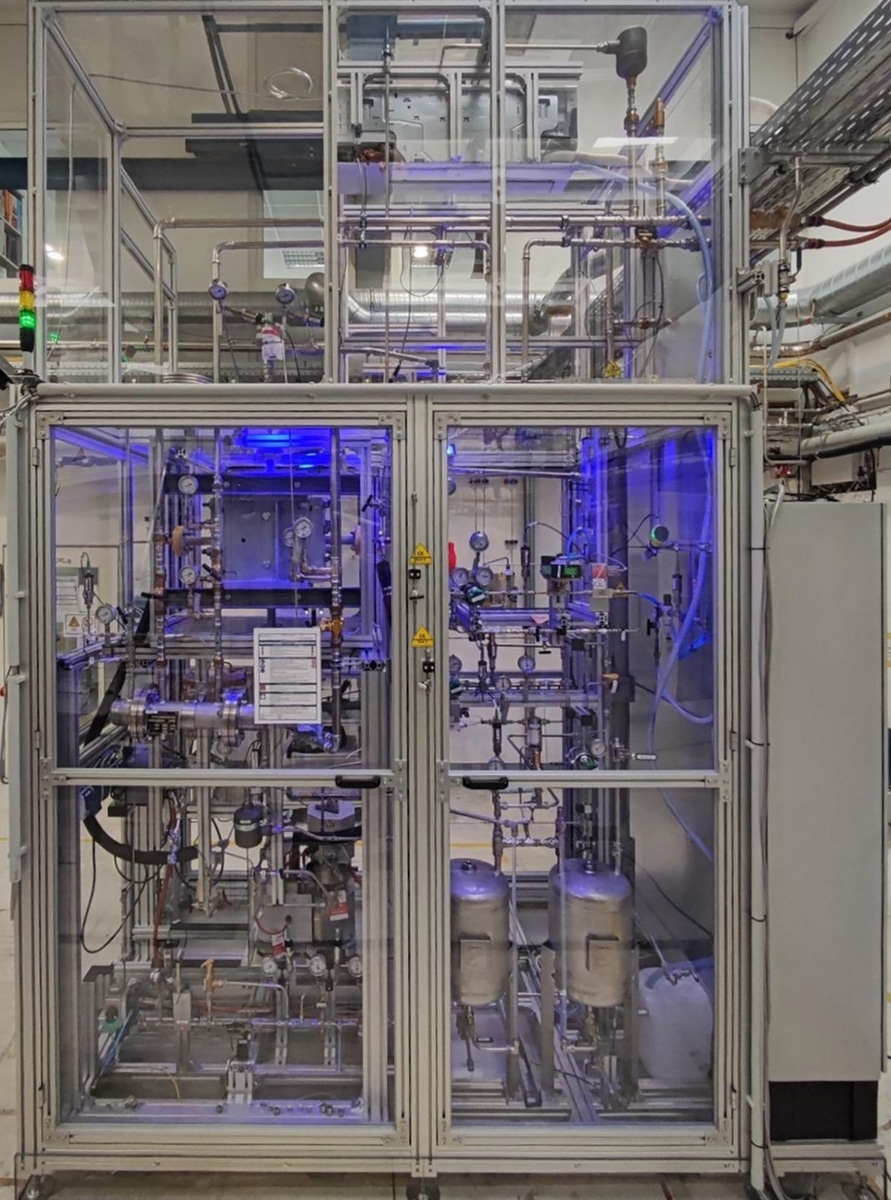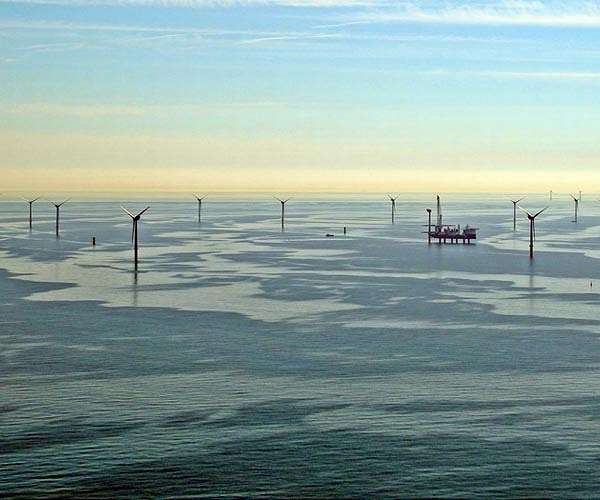
Liquid bearer of hope
Many of the technologies for H2 transport are not yet fully developed. Researchers and industry are working to develop safe H2 distribution over long distances, also because Germany will be dependent on H2 imports on a large scale. In addition to ammonia, liquid organic hydrogen carriers (LOHC) have a good chance of being employed in projects and industry. Because they could use the conventional infrastructure of oil tanks and tankers.
The abbreviation LOHC stands for liquid organic hydrogen carriers. In this, hydrogen is chemically and reversibly bound to a liquid organic carrier substance. That can be toluene, benzyltoluene or dibenzyltoluene, for example. LOHCs describe organic compounds that can absorb and release hydrogen and can therefore be used as storage media for hydrogen. All compounds used are liquid under normal conditions and have similar properties to crude oil and its derivatives. The advantage: LOHCs can be used in liquid form in the existing infrastructure.
Normally, hydrogen is produced in gaseous form at a high pressure of 700 bar or in liquid form and stored and transported at extreme temperatures of minus 253 °C in special containers. Both methods, however, are technically complex and expensive. LOHCs offer an attractive alternative here. One advantage: The direct use of an LOHC, for example in fuel cells to generate electricity, makes the handling of hydrogen as a gas unnecessary. “The technology therefore enables a particularly inexpensive and reliable supply to mobile and stationary energy consumers,” states Daniel Teichmann, CEO and founder of Hydrogenious.

LOHCs could simplify H2 transport over long distances, Source: Projekttra?ger Ju?lich
Reuse of carrier medium
This technology uses little or no fossil fuels. They can be used again and again as in a closed circuit. The process works in two phases: During hydrogenation, the hydrogen is bound to liquid organic hydrogen carriers in the presence of a catalyst, and during H2 release, so dehydrogenation, the gas is released again using heat and a catalyst. The loaded carrier liquid can be stored at ambient pressure and uncooled. For the transport, conventional oil tanks and tankers can therefore be used. When the hydrogen is released, however, the discharged carrier liquid must be returned to the place where it was loaded with hydrogen. Specifically, this means: The ship or tanker would drive in circles fully loaded.
LOHCs are therefore a great hope for H2 transport over long distances. The project TransHyDE on Helgoland is researching, for example, the entire transport chain from the binding of hydrogen to an LOHC through to separation. Currently, the projects are only being implemented on an experimental or small-scale basis.
What is certain, however, is that any form of storage and transport of hydrogen, ammonia, LOHC and other hydrogen-based energy carriers also requires suitable framework conditions. TransHyDE is therefore analyzing the systemic framework and identifying design requirements. The results will then lead to recommendations for action. These include the need to adapt standards, norms and certification options for hydrogen storage and transport technologies.
LOHC technology is also part of the German government’s new hydrogen acceleration law: Because national hydrogen production takes place both through systems for the electrolytic production of hydrogen and through the splitting and dehydrogenation of ammonia and hydrogenated liquid organic hydrogen carriers. The coalition agreement and the update of the national hydrogen strategy provide for the doubling of the national expansion target for electrolysis capacity from 5 to at least 10 GW by 2030.
But that won’t be nearly enough. Germany will need H2 imports. LOHCs could play an important role in this. The new national ports strategy (Nationale Hafenstrategie, NHS) was developed in close conjunction with the implementation of the national hydrogen strategy. In the NHS, the German government assumes that up to 70 percent of hydrogen demand will be covered by imports by 2030, which will mainly occur by ship.
Carrier material benzyltoluene
The LOHC technology from Hydrogenious could be particularly interesting for the maritime transport of hydrogen: Because it uses the existing infrastructure for liquid fuels in the ports and can be transported by tankers or barges. This is entirely in line with the national ports strategy, which aims to create sustainable concepts for the reuse of conventional infrastructure.
Hydrogenious employs the flame-resistant thermal oil benzyltoluene as a carrier medium. According to the company, this enables efficient storage, especially in densely populated port areas (e.g. Rotterdam, see p. 17). Hydrogen stored in an LOHC can be handled at ambient temperature and pressure and has a hazard potential comparable to diesel, describes Andreas Lehmann, Chief Strategy Officer at Hydrogenious LOHC.
The company believes that LOHCs eliminate the shortcomings of existing methods. These are less flammable and cheaper to transport than liquid hydrogen, which is highly explosive, highly vaporizing and requires expensive containers and a new, special infrastructure. The recovered hydrogen also has a high purity, unlike after the reconversion of methanol.

Patrick Schühle works on LOHCs at Universität Erlangen-Nürnberg, Source: FAU
The company Hydrogenious from Erlangen, Germany also participates in various research projects: In the project LOReley, experts from industry and research want to optimize the process of H2 release, so the dehydration. “To release the hydrogen requires reaction accelerators, so catalysts, and temperatures of up to 330 degrees Celsius,” states researcher Dr. Patrick Schühle from the Friedrich-Alexander-Universität Erlangen-Nürnberg (FAU, see Fig. 3). Heat must be supplied to the process all the time. “The less heat you have to provide for the process, the more efficient the entire LOHC technology becomes, because you save energy,” he states.
LOReley developing a plate reactor
Until now, for dehydration, a reactor with tubes into which pellets measuring just a few millimeters were poured was used. The pellets consist of porous aluminum oxide in which the actual active metal platinum is deposited. When the hydrogen-loaded LOHC comes into contact with the pellets, the H2 is released. The researchers of project LOReley have now chosen a new approach and are relying on a plate reactor based on heat exchangers that are otherwise familiar from heating systems, refrigerators or industrial plants.
Another advantage over the previous procedure, the scientists believe, is that the catalyst is firmly attached to the plate. “In the bulk reactor, the pellets can rub against each other and the catalyst may be rubbed off as a powder. In Project LOReley, we have now developed a catalytic layer that is highly resistant to mechanical abrasion and vibrations,” states chemical engineer Schühle.

In this plate dehydration unit, hydrogen was released, Source: Hydrogenious LOHC
In the project, the experts tested the new catalyst reactor concept in the laboratory and on the premises of the participating company Hydrogenious LOHC Technologies, an FAU spin-off. The new plate reactor ran stably for around 1,000 hours. It was also shown that the hydrogen release rate within 15 minutes was able to be doubled. “The heat is not brought comparatively slowly over the entire volume of the reactor, but rather specifically and directly to the catalyst layer,” says Schühle. This flexibility in dynamic operation is certainly relevant in gas power plants or in ship transport.
Schühle and colleagues were able to test their approach on a comparatively small scale. The reactor consisted of ten plates. In the next step, the demonstrator must grow so that it can be used in real operation at a location where the hydrogen is also needed. Only then can they say how good the reactor is in terms of thermal efficiency compared to the standard reactor. LOHCs offer many opportunities. Whether all hopes can be fulfilled the LOReley project, but also the technology as a whole, still needs to be demonstrated.
Transport by ship is 20 percent more expensive
According to an analysis by Aurora Energy Research, transports by ship to Germany are generally at least 20 percent more expensive than pipeline transport: Accordingly, liquefied hydrogen from Spain comes to 4.35 euros and from Morocco to 4.58 euros per kilogram. If transported using liquid organic hydrogen carriers (LOHCs) or ammonia, it would be around 4.57 euros per kilogram from Spain and around 4.70 euros from Morocco, including the costs of converting it back into gaseous hydrogen in Germany. For imports from Australia and Chile, ship transport is generally the only option. They will only reach competitiveness if the hydrogen is transported as ammonia. Then, the costs are 4.84 or 4.86 euros per kg. All of these values are within the range of production costs in Germany. So it would depend on the specific individual case as to which path is competitive. For hydrogen from the United Arab Emirates, the cheapest transport would also be in the form of ammonia; however, at 5.36 euros per kilogram, this would not be competitive in comparison to domestic production.








